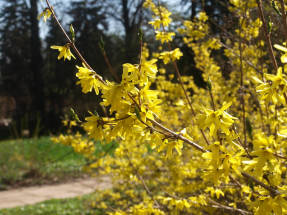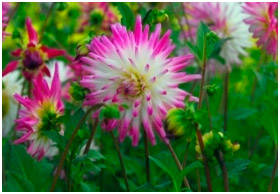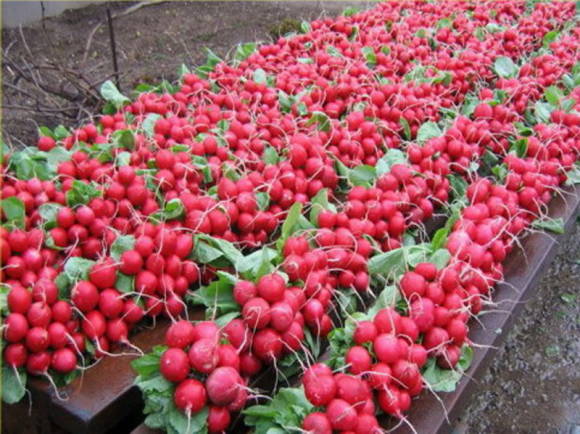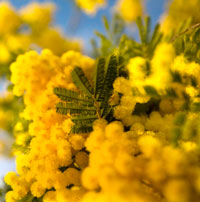Pruning flowering shrubs is one of the essential and very important parts of caring for them. But you should know that shrubs blooming in spring should be cut off strictly after the end of their flowering, this is the only way we will allow new shoots to form, and not harm flowering if the shrubs are pruned in early spring, even before the buds open.
In early spring, such shrubs bloom as forsythia, three-lobed almonds, weigela, mock orange, deytsia, many spireas (although there are summer-flowering species), buldenezh viburnum (Snow Globe), kerria, as well as lilacs, holly mahonia, rhododendrons and tree-like peonies. All these plants form shoots by autumn and lay flower buds on them. If you cut them before flowering, then we will remove these buds along with the shoots, and flowering will be significantly weaker or may be absent altogether. Of course, you should not completely ignore these plants in early spring if they need a small sanitary pruning, that is, the removal of dry shoots, broken or those that grow deep into the crown, thickens it strongly, and are completely unnecessary for the plant - such shoots must be removed ... The main pruning should be done exclusively after flowering, and for some breeds it has its own characteristics.
 |  |
For example, pruning forsythia should start with thinning the bush, that is, remove all old shoots by cutting them as close to the soil surface as possible. Sometimes you can see that such shoots have many lateral growths closer to the soil surface, in this case it is appropriate to cut off part of the shoot directly above the young growths. All shoots on which there were flowers, in forsythia, must be shortened by a third with the end of flowering.
 |  |
Three-lobed almonds (three-lobed luizeania), prone to strong thickening, in view of this, the shrub must be cut off necessarily and annually. Terry varieties thicken especially strongly. You can start pruning this plant immediately after flowering is over. From each shoot, you can leave only a small part, which has two pairs of buds. You should not be afraid, before the end of the warm season, young shoots will grow from the sinuses. Ideally, the shrub should be shaped so that the branches that make up it are not older than five years. Of course, you should pay attention to the shoots that grow deep into the crown - they also need to be removed. Many gardeners give the shrub a rounded shape, cutting out all the shoots that come out of this shape - this is very beautiful. In the autumn, you can carry out another pruning - by removing or simply pinching parts of the shoots that did not have time to woody. If this is not done, then in winter they will freeze. In the summer, after pruning, it is very desirable to feed the shrub with nitrofoskoy, dissolving 25-35 g of fertilizer in a bucket of water and pouring this volume under the bush. In the fall, you can make another top dressing, but this time add potassium monophosphate, 10-15 g under each bush.

Mahonia is holly - many grow it without pruning at all, but this is not true, the shrub needs pruning, it will make the bushes as beautiful and indestructible as possible, it will not allow the base of the bush to be exposed, which is often observed. All shoots can be cut by 50% or a third, if they are not very old. Pruning can be carried out immediately after flowering and in the autumn, when only growths that do not have flower buds can be removed.
 |  |
In May or June, one can observe flowering in the Van Gutt spirea, Nippon spirea, oak-leaved spirea, sharp-toothed spirea, medium spirea and gray spirea. In these species, flower buds are laid along the entire length of the growths of the past season. To reduce the volume of the plant and make it compact and neat, it is necessary to shorten the shoots to the youngest branch. This pruning will stimulate the abundant growth of young shoots.Old shoots that do not have good growth can be removed completely, then young shoots will form more actively.
 |  |
Weigela - it is best to cut it at the end of June, before the plant has time to form young shoots. Immediately after flowering, the shoots on which there were flowers must be cut off up to the first vertical growths, which are most often located at the base of the bush. Shoots old and not having vertical growths are removed completely. If the pruning has been tightened a lot, and the plant has already formed growths, then it is better not to do it at all, because you can easily cut off all the flower buds.
 |  |
Chubushnik is also pruned in the summer, after flowering, cutting out all the shoots older than two years. If such pruning is not done, then the lower part of the bush will be very bare and flowers are formed in small quantities and only on young growths. All other shoots of the chubushnik should be shortened by about a third in order to activate branching. It is noticed that the sooner the mock-orange is cut off after flowering, the more there will be young growths, which by autumn will have time to grow woody and will be able to survive the winter.
 |  |
Action - it must be cut off every year at the end of flowering. After pruning or before it, the bushes need to be fed with nitrophos, adding this fertilizer dissolved in water, 15-20 g for each plant. All shoots on which there were flowers should be shortened to the very first young growth in the action. And if it is not on the shoot, then cut them out at the surface of the soil. If the bush has not been cut for a long time, it must be thinned as much as possible, leaving only shoots no older than 5 years of age. Old shoots can be removed completely or only parts about 20 cm long with lateral branches can be left from them.

Kerria - at the end of flowering, this plant needs to shorten the shoots by a third, and cut out the branches older than four years completely. Such pruning will stimulate the formation of young shoots, on which flowers can form again this fall.
 |  |
Viburnum vulgaris Buldenezh ends blooming early, usually at the end of May, less often later. Therefore, already at the beginning of June, you can start pruning - adjust the shape of the bush, thin it out, removing all shoots thickening the crown. Pruning viburnum Buldenezh should be done before August, if you do it later, then young shoots will not become woody and may freeze in winter.
 |  |
Lilacs, in which flowering also ends very early, usually in the first days of the second decade of May, must remove all inflorescences that have completed flowering and cut out all the shoots at the base of the bush. Inflorescences that have faded must be removed before the first pair of shoots with leaf blades or buds located on the growths of the past season. Those growths that appear from dormant buds must also be cut off. In the middle of the crown of the lilac, it is necessary to remove the branches thickening the crown. Be aware that it is not worth cutting the shoots too much, they can form a very large number of young growths, which will only lead to a strong thickening of the crown and reduce the winter hardiness of the plant. Taking this into account, no more than 25% of the shoots can be removed in one season.
 |  |
Rhododendrons - if they are not cut off at all, then the flowering will be periodic, therefore, as soon as they finish blooming, only the inflorescences that have withered should be cut out. To increase the density of the crown, you can pluck out part of the vegetative apical buds.
 |  |
The tree peony also needs to be cut immediately after flowering, removing all remnants of flowers with a stem, making a cut over the most well-developed leaf blade.
Photo by Maxim Minin, Rita Brilliantova and from the Greeninfo.ru forum







